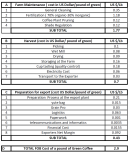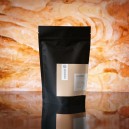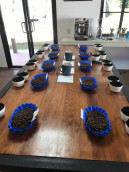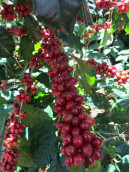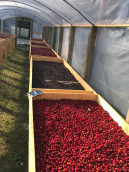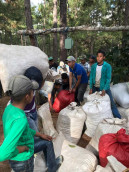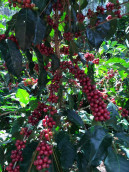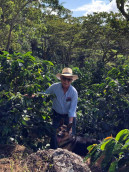Arnold Paz is locally known for his passion, curiosity and love for coffee. He is our main contact in Honduras, but not only because of his dedication and delivered quality. He also trains and consults with other farmers, so he can establish relationships with new people and projects as well. With the help of our partners at Cima Cafe and Arnold himself, we can keep an eye on any hidden gem, but also establish a sustainable relationship Arnold and give him peace of mind and financial freedom.
The value chain
Key achievements
2018
First purchase of this coffee.
2020
April: reserved entire El Sopapo lot, making it another Shokunin exclusive coffee.
2022
March: had a Zoom meeting with Arnold Paz and importer Yair Kedair to discuss the current struggles and solutions for them.
The microlots
We wanted to get things started by adopting one coffee and making it an exclusive. Since 2020, the El Sopapo is fully ours, so now we can start looking at other varieties and processes to include.
The history
El Sopapo is a microlot from the Paz family’s farm called finca San José. It all started in 1882 when Don Pablo Paz, Arnold’s great grandfather, was a postman in the town of San José de Colinas, Santa Barbara. He told his father, Don Diego, that his dream was to plant coffee. Don Diego told him he had some idle ground in the Volcano, 8 hours away from town. “If you work them, they are yours.”
Don José Maximiliano Paz, Pablo’s eldest son, continued the coffee trade and after each harvest walked three days with 20 mules to Trinidad where the coffee was sold at a premium. Later in life, he took his son, José Arnold, our farmer’s father, every morning to supervise the milking of the cows. On their way, they crossed a beautiful coffee plain with lots of orange trees, which has since then been called “El Naranjal”. José Arnold, at only six years of age, repeated the strong phrase “I want to plant coffee”, and his father responded with: “If that’s what you want, you’ll work it, and El Naranjal is yours.” This kept these pieces of land in the Paz family and ultimately to Arnold, our farmer, and his two brothers. Their father is over 80 years of age and still supervises the farm.
The farm
In total, the farm consists of 200 manzanas of land, divided into 100 of natural reserve (forest), 19 of coffee and the rest is kept for cattle. There are six natural sources of water around which bathe almost the entire property.
The farm is divided into 12 lots according to variety, altitude and cup profile. A microlot consists of a maximum of 50 bags and a minimum of 1 bag. The coffee is collected with around 15 pickers. They use boards with 50 holes to check all the collected cherries. Strong regulations about quality allow for not less than 85% of perfectly ripe cherries.
Once all the harvested coffee is in a tank, it is taken through a hydraulic system that separates unripes and dried cherries, similar to a floating tank. It is then depulped using a Jota Gallo depulped with an adjustable speed. They use 35 – 40 rpm for small to regular size cherries such as Catuai, Caturra and Typica, and 45 rpm for Maragogype and Bourbon.
After depulping, the coffee is usually fermented for 28 hours, depending on the weather circumstances. Then, the coffee is soaked in water for 24 hours in order to remove the last traces of mucilage and prevent fungi. After this, the coffee is first dried on patio for 8 hours to give the drying process a kickstart. After this, it is transported to solar driers, also known as African beds, where it is dried back to 12% moisture.
The processing
Arnold Paz realized that in order to improve his quality, he needs data about his coffee, as much as he can gather. This is something he can also use to train other farmers in their practices. For each of his lots, he registers not only the variables in processing, but also the exact hours of drying and fermentation, which dryers were used, how many days of drying and rest the coffee had, the average ambient temperature and moisture, etc. This gives us confidence that we can work with this coffee in the coming years and learn from any taste difference it may exhibit.
One unique feature of Arnold’s processing is that he leaves the coffee to rest in oak crates, usually for 28 days after drying. This stabilizes the water activity between the beans.


